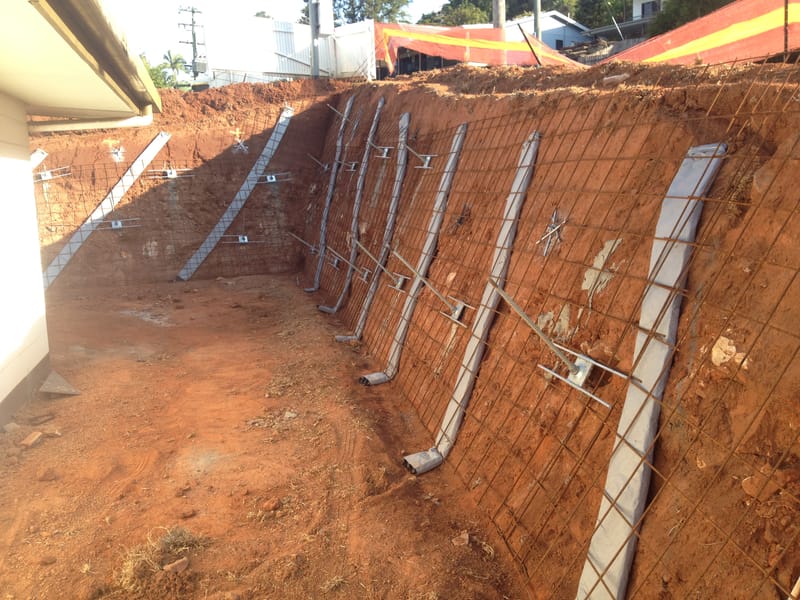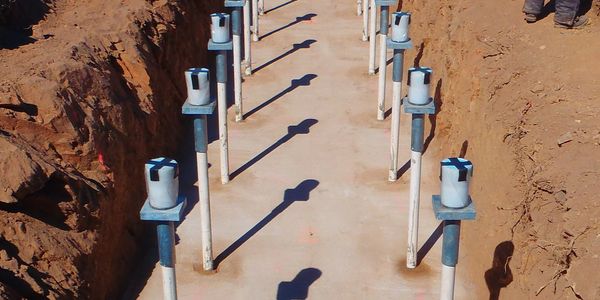Cutting-edge Rock Anchors for Improved Construction Assistance
Cutting-edge rock anchors have increasingly end up being a focal factor in construction engineering, especially as tasks require greater stability and effectiveness. As we think about the effects of smart sensors and sustainable methods, one must ask: exactly how will these growths redefine the future of building and construction support?
Evolution of Rock Anchors
The development of rock anchors has dramatically changed construction practices over the past century. Initially, rock anchoring methods were fundamental, depending on straightforward mechanical tools and rudimentary materials. As design disciplines advanced, so did the understanding of geological conditions and the demand for trusted anchoring systems - Williams Anchors. The mid-20th century saw the intro of high-strength steel ligaments, which supplied improved load-bearing capabilities, permitting even more ambitious construction jobs in challenging surfaces.
In tandem with advancements in products scientific research, the growth of grouting methods improved the bond between the anchor and surrounding rock, resulting in raised security and sturdiness. The assimilation of modern technology right into layout and screening processes has led to much more precise and reliable installation methods, further optimizing efficiency. Computer system modeling and simulations currently enable engineers to predict anchor behavior under different problems, boosting safety and security and reliability.
Moreover, the growing emphasis on sustainability within building techniques has actually resulted in technologies in environment-friendly materials and strategies for rock anchoring. Overall, the journey of rock supports reflects the building and construction market's adaptation to both technical improvements and the raising complexity of modern design challenges.

Sorts Of Modern Rock Anchors
Modern rock supports can be found in a variety of kinds, each developed to fulfill details design demands and geological conditions. One of the most usual kinds include grouted supports, which entail inserting a steel ligament right into a pierced hole and filling up the area with grout to produce a solid bond with the bordering rock - Williams Anchors. These anchors are frequently made use of in applications calling for high tons abilities
One more commonly used type is the mechanical anchor, which counts on mechanical devices to secure the anchor in position without the need for grouting. These anchors are favored in situations where instant load-bearing capacity is essential.
In addition, there are post-tensioned anchors, which are mounted tensioned to give security to frameworks such as bridges and maintaining wall surfaces. These anchors help to combat tensile forces acting upon the structure.
Advantages of Cutting-edge Layouts
Development in rock support layout brings countless benefits that enhance building performance and architectural stability. Modern designs make use of innovative materials and engineering strategies to dramatically boost load-bearing capacities. These ingenious supports are typically constructed from high-strength steel or composite products, which not only minimize weight yet also improve resistance to deterioration, guaranteeing longevity and integrity in various ecological conditions.
In addition, the use of computer-aided style (CAD) and finite element analysis (FEA) enables exact modeling and screening of support performance under real-world conditions. This results in supports that can be customized to certain task needs, maximizing their performance go to my blog and minimizing the demand for over-engineering, which can be both set you back and resource-intensive.

Study in Building And Construction
Real-world applications of cutting-edge rock support styles illustrate their transformative influence on building and construction tasks. One noteworthy study entails the building and construction of a high-rise structure in a seismically energetic region. Engineers used progressed rock anchoring techniques that utilized high-strength materials, guaranteeing the structure's stability against prospective quakes. The supports were purposefully put to boost load distribution and decrease settlement, eventually causing an extra resistant structure.
Another significant example can be found in the expansion of a transportation passage. Innovative rock supports were utilized to protect the passage walls, permitting deeper excavation without endangering safety. The application of grouted rock anchors provided increased tensile stamina, allowing workers to advance the job immediately.
In a third instance, a significant dam job incorporated rock anchors to maintain the embankment. The usage of corrosion-resistant materials in the anchors guaranteed lasting longevity, reducing maintenance prices and enhancing security criteria.
These study demonstrate the effectiveness of ingenious rock support styles in dealing with complicated engineering difficulties, underscoring their vital duty in modern-day building and construction methods. The effective results highlight the need for ongoing investment in innovative anchoring innovations to websites fulfill developing building and construction needs.
Future Trends in Rock Anchoring
As building demands evolve, the future of rock anchoring is positioned for substantial advancements that will certainly improve security and efficiency in numerous applications - Williams Anchors. Arising modern technologies, such as smart sensing units and real-time surveillance systems, are anticipated to play an important role in the growth of more trustworthy securing options. These innovations will certainly permit for continuous assessment of support performance, allowing prompt interventions and decreasing dangers connected with find more information structural stability
In addition, the assimilation of sustainable materials and practices is becoming increasingly vital in the construction industry. Future rock anchors may include eco-friendly products that reduce ecological influence while keeping efficiency standards. Developments in materials scientific research could lead to the advancement of high-strength, lightweight supports that simplify setup procedures and minimize labor costs.

Final Thought
To conclude, ingenious rock anchors stand for a significant innovation in building support, dealing with the challenges posed by varied geological problems. The development of contemporary designs, including grouted and post-tensioned anchors, improves load-bearing capabilities while advertising security. Assimilation of advanced innovations, such as computer-aided style and wise sensors, further maximizes efficiency and sustainability. Continued research study and implementation of these advancements will unquestionably shape the future of building practices, making certain effectiveness and ecological obligation.